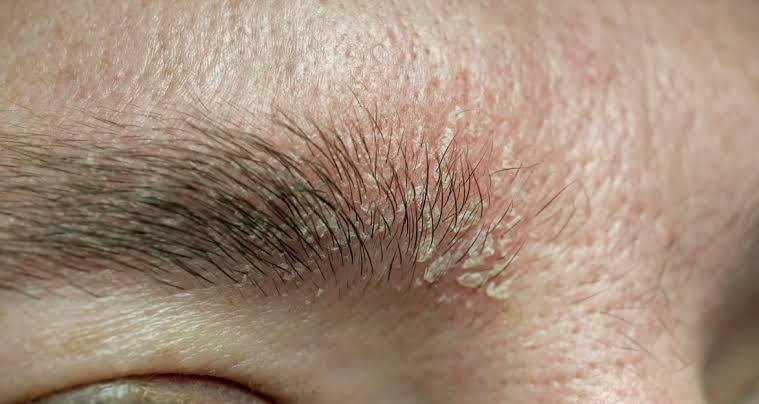Seborrheic dermatitis (SD) is a prevalent, chronic relapsing inflammatory skin condition that affects patients of all ages, with a global prevalence of ≥ 5%. Patients suffering from SD typically develop pruritic, erythematous patches that feature easily detachable scales, primarily in sebum-rich regions such as the scalp, face, upper chest, and back. This condition imposes a considerable burden on patients.
While common topical treatments for SD include antifungal agents (like ketoconazole and ciclopirox), topical corticosteroids, and keratolytic products, their long-term use is often limited. These limitations stem from low efficacy, potential side effects, and formulation challenges, as ingredients may cause dry or broken hair, failing to accommodate various cultural hair care considerations.
The potential solution explored in this research, roflumilast foam 0.3%, is a selective and highly potent phosphodiesterase 4 (PDE4) inhibitor. PDE4 inhibition works by reducing the degradation of cyclic adenosine monophosphate, which leads to decreased production of proinflammatory mediators, decreased sensory neuron activation (thus mitigating itch), and normalization of keratinocyte activity. Roflumilast is noted to have a significantly higher potency (approximately 25- to > 300-fold) compared to other agents like apremilast and crisaborole. Moreover, the foam formulation is emollient and water-based, specifically designed to maintain the integrity of the skin barrier and the hair, potentially overcoming formulation-related challenges associated with existing treatments.
Methods
This investigation was a phase II, multicenter, single-arm, open-label trial (NCT04445987) conducted across 39 sites in the USA, enrolling a total of 400 patients aged ≥ 12 years with SD. Patients applied roflumilast foam 0.3% once daily to all affected areas, including the scalp, face, trunk, and intertriginous areas, for a duration initially set at 24 weeks but later extended up to 52 weeks. The primary endpoints focused on the occurrence of treatment-emergent adverse events (TEAEs) and serious adverse events (SAEs), while secondary assessments included local tolerability and efficacy. Efficacy was primarily measured using the Investigator Global Assessment (IGA) score, alongside metrics like the Worst Itch-Numeric Rating Scale (WI-NRS) and Scalpdex total scores.
Key Findings
• Safety Profile: Roflumilast foam 0.3% was well tolerated over the study period, with a low rate of TEAEs reported (32.5% of patients), most of which were mild or moderate (91.5%).
• Discontinuation and SAEs: Only 5 patients (1.3%) discontinued the trial due to an AE, and serious adverse events (SAEs) were infrequent (1.8%), with none considered treatment-related.
• Gastrointestinal and Psychiatric AEs: Unlike oral PDE4 inhibitors (such as oral roflumilast and oral apremilast), once-daily topical roflumilast foam was associated with very low rates of gastrointestinal AEs, with only 1.3% reporting nausea and 1.0% reporting diarrhea. Furthermore, assessments for depression and suicidal ideation identified no safety concerns, indicating infrequent psychiatric AEs commonly observed with oral PDE4 inhibitors.
• Local Tolerability: Local tolerability was excellent; investigator-rated assessments showed that ≥ 96.0% of patients had no evidence of irritation at any timepoint. Patient-reported stinging sensation at the application site was reported by ≤ 1.1% of patients at each visit.
• Durable Efficacy (IGA): Durable improvement in the signs and symptoms of SD was observed. The proportion of patients achieving an IGA score of clear or almost clear (IGA 0/1) was 76.0% at week 24 and maintained a high level of 80.4% at week 52.
• Pruritus Relief: Treatment effectively reduced pruritus (itch). Among patients with a baseline WI-NRS score of ≥ 4, 71.3% achieved a clinically meaningful ≥ 4-point improvement from baseline at week 24.
• Treatment-Free Interval: For patients who achieved IGA 0 (completely clear) and subsequently stopped treatment, the median treatment-free interval was observed to be 22.7 weeks.
Conclusion
This research significantly extends the findings of previous randomized controlled trials regarding the acute use of roflumilast foam 0.3% for seborrheic dermatitis by providing long-term data up to 52 weeks.
The novelty of this research lies in demonstrating that once-daily topical roflumilast foam 0.3% is a well-tolerated and efficacious monotherapy option with durable efficacy for the chronic treatment of SD across all affected body areas, including the scalp, face, and trunk. Crucially, the topical application successfully maintained the PDE4 inhibitor’s efficacy while circumventing the higher rates of systemic gastrointestinal and psychiatric adverse events typically associated with oral PDE4 inhibitors. Additionally, the specialized foam formulation avoids ingredients that might cause hair breakage or dryness, addressing a key limitation of existing treatments for patients with diverse hair care needs.
The future implication of this durable long-term safety and efficacy profile is that roflumilast foam 0.3% provides clinicians and patients with a reliable and low-risk option for continuous management of a chronic, relapsing condition like SD, thereby potentially improving patient adherence and overall quality of life.
Link to the study: https://tinyurl.com/2hnnkakx

